Click on images to enlarge

habit (Photo: Greg Jordan)
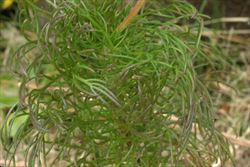
highly-divided leaves (Photo: Greg Jordan)
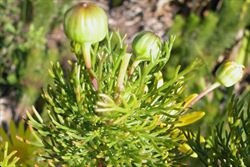
close-up of upper leaves and flower buds (Photo: Greg Jordan)
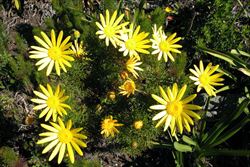
bright yellow flower-heads (Photo: Greg Jordan)
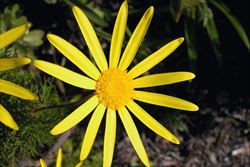
flower-head (Photo: Greg Jordan)

close-up of flower-head from below showing floral bracts (Photo: Greg Jordan)
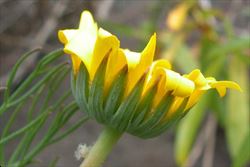
older flower-head (Photo: Greg Jordan)
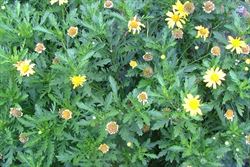
Euryops chrysanthemoides, with broader less-divided leaves (Photo: Sheldon Navie)
Scientific Name
Euryops abrotanifolius (L.) DC.
Synonyms
Othonna abrotanifolia L.
Family
Asteraceae (Queensland, New South Wales, the ACT, Victoria, Tasmania, Western Australia and the Northern Territory)Compositae (South Australia)
Common Names
euryops, euryops daisy, fern-leaf euryops, Paris daisy, winter euryops
Origin
Native to southern Africa (i.e. Cape Province in South Africa).
Naturalised Distribution
Naturalised in south-eastern Australia (i.e. in southern Victoria, Tasmania and south-eastern South Australia).
Notes
Fern-leaf euryops (Euryops abrotanifolius) is regarded as an environmental weed in Victoria, South Australia and Tasmania. This garden escape invades roadsides, open woodlands and coastal habitats in south-eastern Australia.
In South Australia fern-leaf euryops (Euryops abrotanifolius) is a common environmental weed of the Adelaide region. It is also listed as an invasive plant in the Adelaide Hills Council district and as a priority environmental weed in the Mount Lofty Ranges region. In Victoria fern-leaf euryops (Euryops abrotanifolius) appears on several local environmental weed lists (e.g. in the Shire of Yarra Ranges, Manningham City Council and Cardinia Shire Council) and is listed as a moderately invasive weed of concern in the Otways region in western Victoria.
Fern-leaf euryops (Euryops abrotanifolius) is also spreading into native bushland in Tasmania, particularly in sandy heathland areas and coastal sites, and is regarded as a priority environmental weed in the Northern Natural Resource Management region in Tasmania. It is also included on some local environmental weed lists (e.g. in the Municipality of Kingborough) and has been recorded from conservation areas (e.g. in Greens Beach/Kelso Coastal Reserve) in this state.

